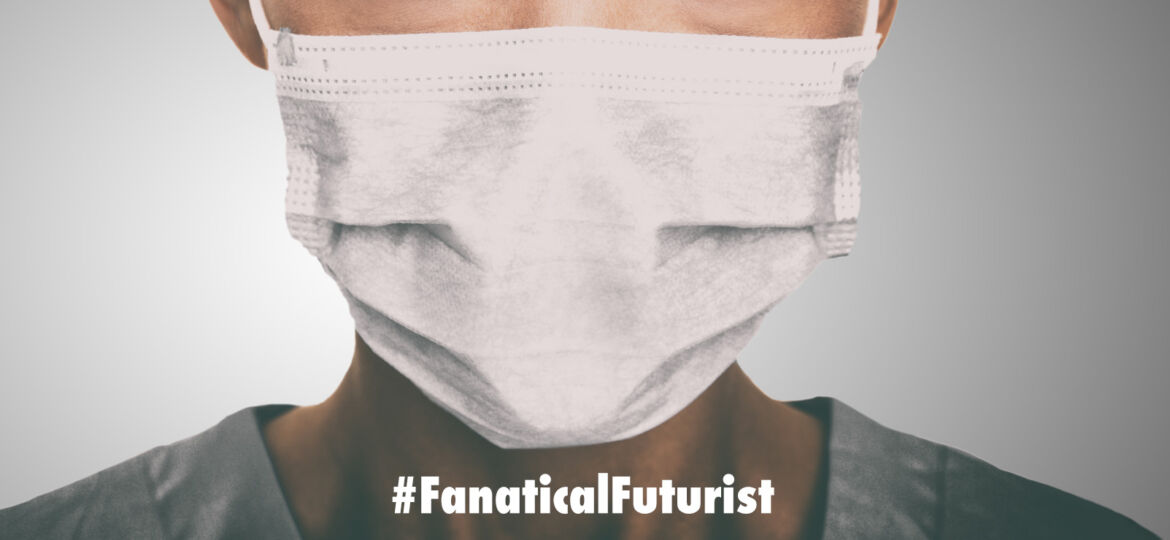
WHY THIS MATTERS IN BRIEF
Detecting the presence of Coronavirus is difficult, this makes it as easy as strapping on a basic face mask.

Interested in the Exponential Future? Connect, download a free E-Book, watch a keynote, or browse my blog.
Coronavirus, Covid-19, is having a devastating impact on people and one of the greatest worries people have today is trying to figure out whether or not they’re infected with it, or are around people who are. And while there have only been a few innovations announced recently, like this sensor that can detect Covid-19 in the air around you, or these heat seeking drones in China, we’ve still got a way to go before we have something that is affordable and easy to use – especially as the world thinks about opening back up again and “getting back to normal,” albeit a new normal.
Now though a team of a team of scientists at Harvard University and MIT are adapting an Ebola and Zika detecting face mask to identify coronavirus cases, according to a post on Harvard’s news site, and while the technology can be used today in the future, with some modifications, it could be embedded into regular clothing and other materials to give you real time warnings on whether or not you’re at risk of exposure to future epidemics or pandemics .
The team initially announced their Ebola and Zika detecting face mask tool in 2016 and published the information in the journal Cell, and now they’re adapting that same technology, which relies on a freeze dried RNA bio-sensor to emit a fluorescent signal when a person with coronavirus breathes, sneezes, or coughs, in order to help improve today’s rather spotty Covid-19 screening systems.
“As we open up our transit system, you could envision it being used in airports as we go through security, as we wait to get on a plane,” said researcher Jim Collins to Business Insider. “You or I could use it on the way to and from work. Hospitals could use it for patients as they come in or wait in the waiting room as a pre-screen of who’s infected.”
Doctors might even use them to do in-situ diagnoses of patients without the wait associated with sending samples to a laboratory. Since testing errors and delays have slowed many countries’ attempts to control local outbreaks, tools that can quickly diagnose infected patients are crucial.
Collins added that his lab’s current work developing the coronavirus detecting mask is still in the “very early stages,” but the results so far are promising. In the last several weeks, his team tested the sensors’ detection ability on coronavirus samples contained in a small saliva sample.
The team is also experimenting with design — at the moment, the lab is discussing whether it will embed sensors inside masks or develop a new module that might be attached to any conventional mask.
The team aims to demonstrate its new concept within a few weeks.
“Once we’re in that stage, then it would be a matter [of] setting up trials with individuals expected to be infected to see if it would work in a real-world setting,” said Collins.
However, it’s important to note that COVID-19 detecting technology isn’t new. In 2018, the lab’s sensors could already detect SARS, measles, hepatitis C, influenza, West Nile, and also other viruses.
“We initially did this on paper to create inexpensive paper-based diagnostics,” said Collins. “We’ve shown it can work on plastic, quartz, as well as cloth.”
The sensors themselves are made of genetic material — RNA and DNA — which binds to viruses. The genetic material is freeze-dried onto the fabric with help from a machine called lyophilizer, which removes moisture from genetic material without causing it do die. The material can remain stable at room temperature for months, producing mask detectors with a fairly long shelf life.
In order to activate them the sensors need moisture which is supplied by our bodies when we breathe out respiratory particles like saliva or mucus, and the detection of the genetic sequence of a virus.
However, the detection signal isn’t visible to the naked eye yet, but the team hope that in future versions it will be, which is why Collins’ lab makes use of a device called a fluorimeter to quantify the presence of fluorescent light. He added that outside of a lab environment, public officials might use handheld versions of these tools — which “cost about a dollar,” according to Collins — to scan the masks of people who might have the virus.
















